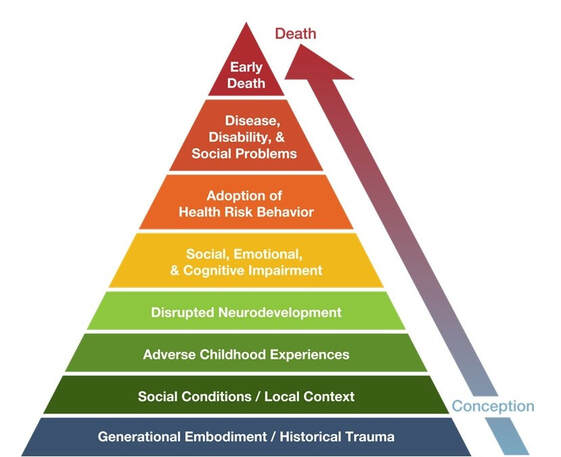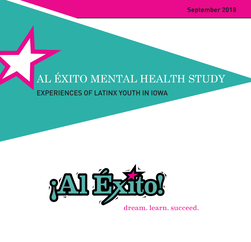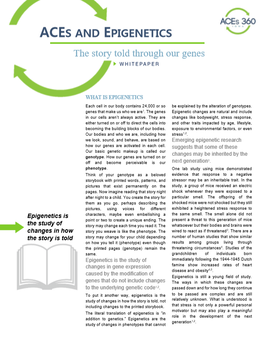|
The ACEs pyramid, developed by the CDC using a version updated by the Ryse Center, helps explain how ACEs are strongly related to developing risk factors for disease and disability throughout a lifespan.
The updated pyramid also explains how historical trauma and current social conditions play a significant role in whether a child experiences trauma. This page explores evolving research around influences on ACEs. |
Social Conditions
|
The ACE Study focuses on adversity within a family, but external factors--including systemic racism, community violence, and natural disasters--can also cause trauma and contribute to ACEs.
Policies and systems drive adverse community environments. Discrimination, poor housing quality, and lack of economic opportunities especially impact people of color. Iowa Department of Public Health data shows that systemic challenges can increase the likelihood of poor health and additional challenges within a home, especially for children. For Iowa adults who experienced four or more ACEs/neglect:
Many Iowa mothers are reporting significant stressors that mirror the adversity identified in the ACE Study and can put their babies at risk. This research comes from the Pregnancy Risk Assessment Monitoring System (PRAMS) survey that examines mothers attitudes and behaviors before, during, and shortly after pregnancy.
|
Iowa mothers report adversity related to ACEs:
|
24%
report sometimes, often, or always feeling depressed since giving birth. |
11%
say someone very close to them had a problem with drinking or drugs. |
13%
of mothers receiving public health insurance reported six or more stressors, compared with 6% of the total population. |
We have an opportunity work with families from the start to identify stressors and increase access to services and support that can help alleviate those stressors. We must also work collaboratively to create the conditions for children, youth, and adults to heal from trauma and thrive.
The Ryse Center has pushed this new way of thinking about ACEs and helping youth heal. Learn more about their approach trauma and healing.
Historical trauma
|
Early experiences of adversity not only impact individuals’ lives, but they also impact future generations. Our experiences may be woven into our children’s and even our grandchildren’s genetic code.
This is explained through emerging science called epigenetics. Each cell contains thousands of genes that make us who we are. These genes can turn on or off to direct the cells how to behave. How we look, sound, and act are based on how our genes are activated. While our basic genetic makeup remains the same, our environment can modify certain genes that then impact aspects of ourselves like body weight or our stress response system. A correlation between mothers who experienced adversity in childhood and developmental delays in their children at one year of age suggests that maternal experiences can be transferred and have a long-term impact on a child’s epigenetic and physical development. |
Not only can a parent’s stress change the genes that a child inherits, but that parent’s genes may also have been modified by historical trauma in their families who lived through war, slavery, and other tragedies. Several human studies show this connection among groups living through threatening circumstances. For example, studies of the grandchildren of individuals born immediately following the 1944-1945 Dutch famine show increased rates of heart disease and obesity.
Learn more about ACEs
|
Get more involved in learning about ACEs and implementing best practices to respond.
|
Learn about how ACEs impact brain development and future health and social outcomes.
|
Learn about solutions for helping adults and children heal and for preventing ACEs.
|



